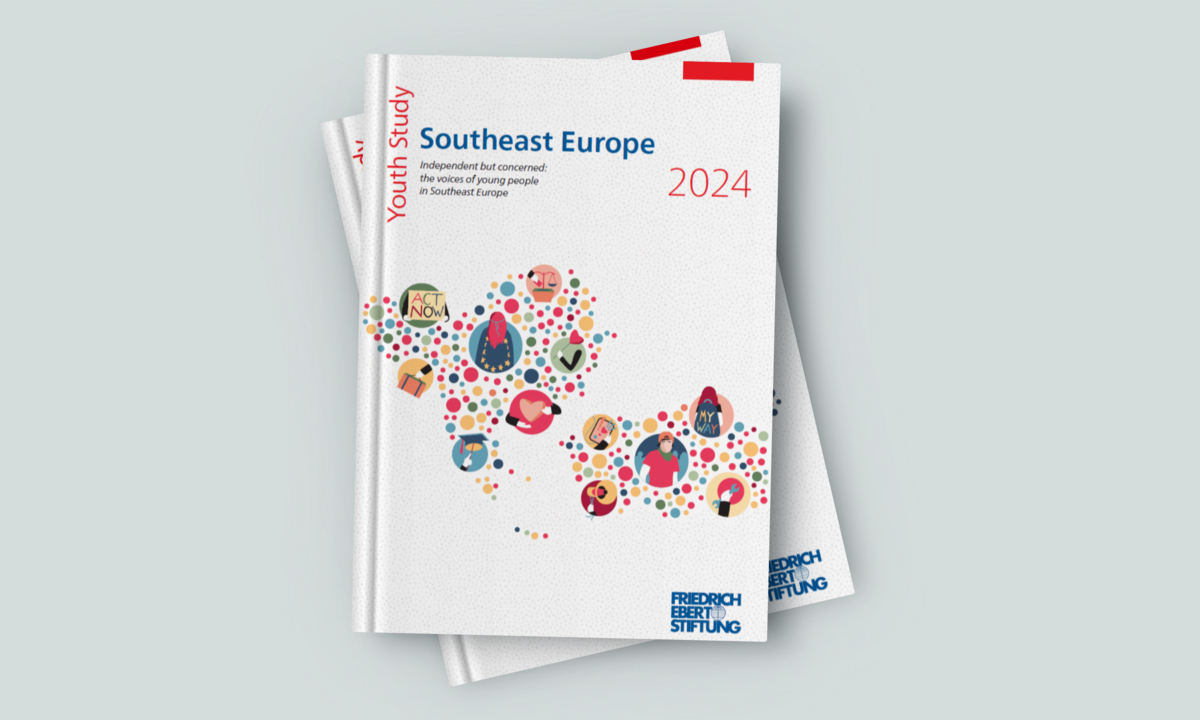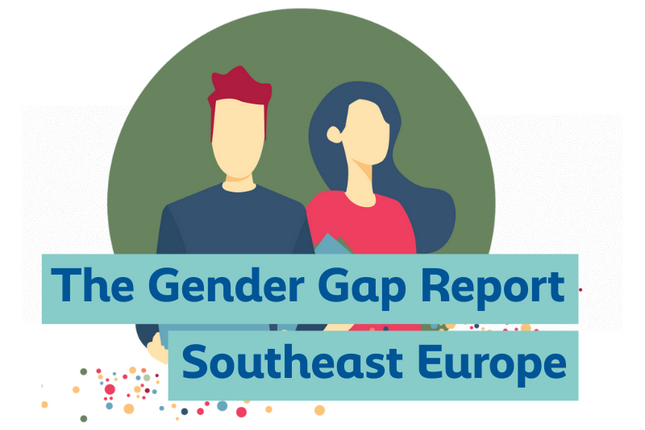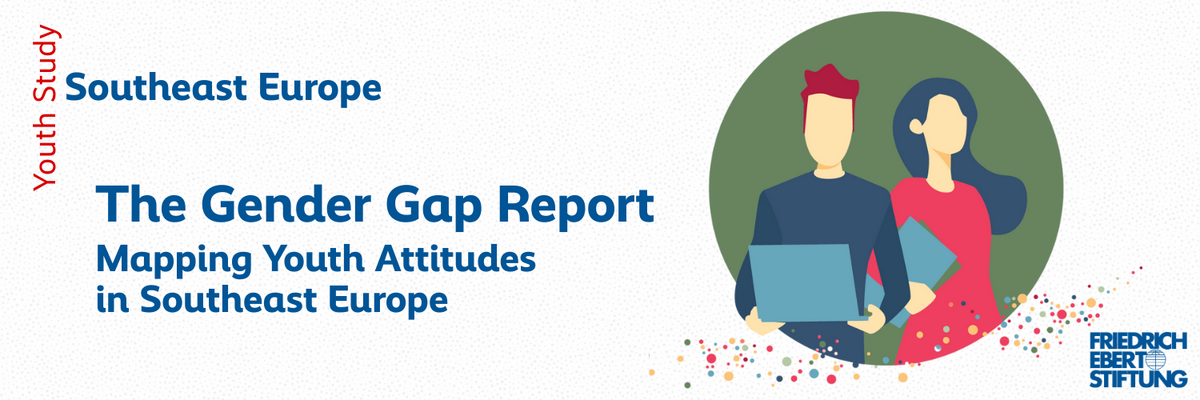
The Gender Gap Report Part I: Gender and Political Leadership
The Gender Gap Series: Exploring Southeast European Youth in a Polarizing World
Across the world, a consistent pattern is emerging: young men and women are drifting apart ideologically at an unprecedented pace. From the United States to South Korea, from Germany to Tunisia, researchers are documenting a widening gulf in political attitudes, social values, and worldviews between young men and women. What The Economist calls "the growing gulf between young men and women" and the Financial Times describes as "a new global gender divide" has become one of the defining social phenomena of our time.
Southeast Europe offers a unique laboratory to examine whether and how these global patterns manifest in post-transition societies. The Friedrich Ebert Foundation's Southeast Europe Youth Study 2024, surveying nearly 9,000 young people aged 14-29 across twelve countries, provides an unprecedented opportunity to explore these questions. Are young men and women in this region experiencing similar ideological divergences? How do local histories, cultural contexts, and ongoing political transformations shape gender attitudes? What can this region—with its mix of EU members, candidate countries, and states navigating between East and West—teach us about the forces driving young people apart or together?
This is the first in a ten-part series examining these gender gaps through the lens of the Youth Study data. Each analysis will explore a different dimension of the gender divide—political leadership, employment attitudes, partnership expectations, tolerance and values, political participation, and more. Some will take a regional perspective, identifying patterns across Southeast Europe, while others will dive deep into country-specific dynamics revealed by unique national survey questions.
Who Makes Better Leaders? The View from Southeast Europe's Rising Generation
We begin with perhaps the most fundamental question about gender and power in democratic societies: attitudes toward women's political leadership. The data reveals that Southeast Europe is indeed experiencing its own version of the global gender divide.
Young men across Southeast Europe are significantly more likely than young women to believe that "men make better political leaders than women do," revealing a persistent gender gap that varies by country and is amplified by political engagement and ideology. Analysis of the Friedrich Ebert Foundation's Southeast Europe Youth Study 2024 shows that 24.6% of young men agree with this statement compared to just 10.9% of young women—a 13.7 percentage point gap that represents a consistent demographic divide in contemporary po
This gender gap in perception of male and female political leadership is not just a reflection of traditional social attitudes but also reveals deeper patterns about political engagement, ideological polarization, and the future of democratic representation in a region still navigating its post-transition identity. The findings suggest that as young people become more politically engaged, gender differences in attitudes toward female leadership actually intensify rather than diminish.
The Regional Landscape: Where Gender Gaps Are Largest and Smallest
The gender gap in political leadership attitudes varies across countries of Southeast Europe, from a high of 19.4 percentage points in Montenegro to just 3.9 points in Kosovo. This variation likely reflects different trajectories of political development, women's rights advancement, and cultural modernization across the region.
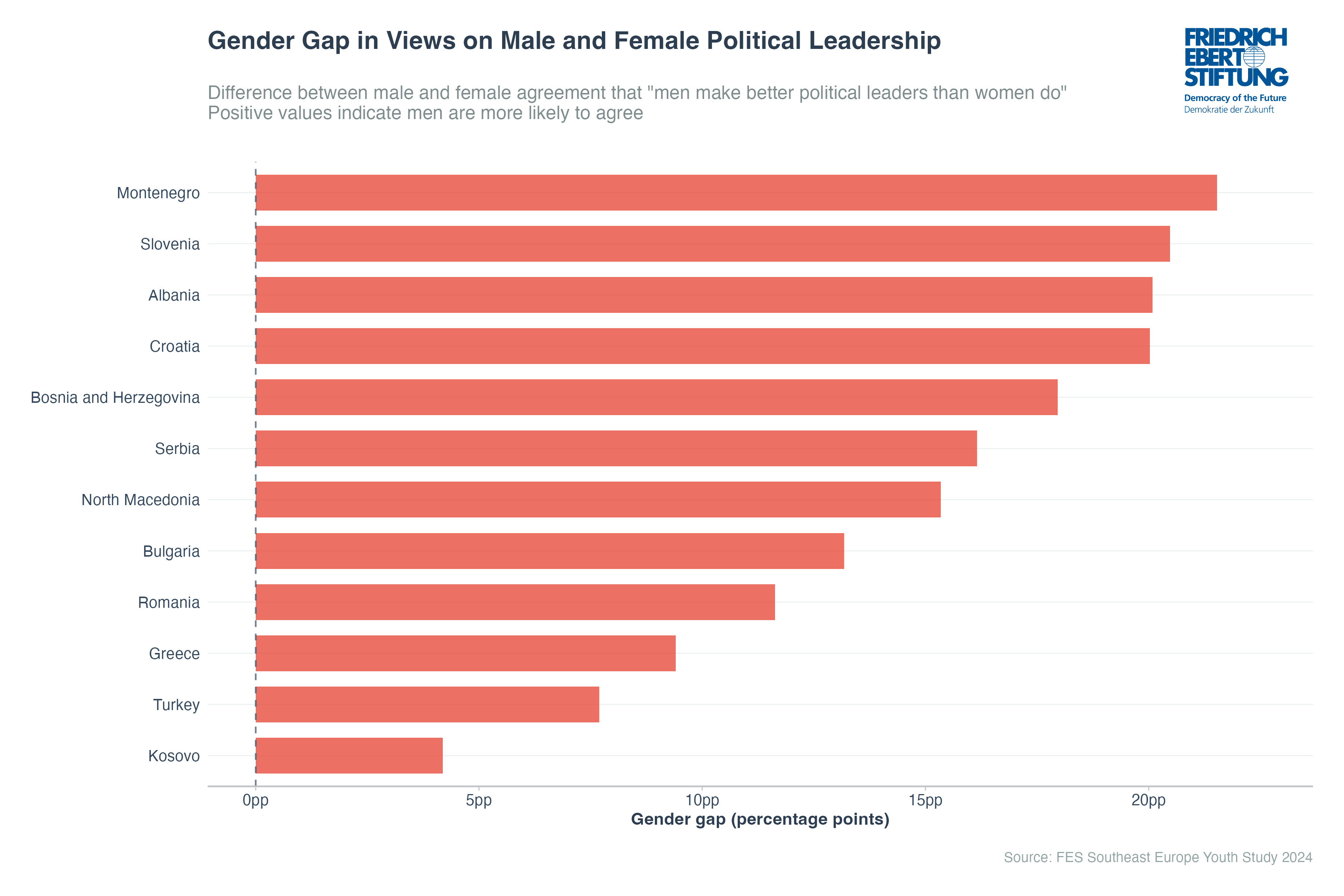
The largest gender gaps appear in countries with different political and social contexts. Montenegro (19.4pp), Slovenia (18.1pp), and Albania (17.6pp) lead the region, while Kosovo (3.9pp), Turkey (8.5pp), and Greece (8.8pp) show the smallest differences. Notably, these patterns don't align neatly with EU membership, economic development, or traditional measures of gender equality, suggesting that attitudes toward political leadership represent a distinct dimension of gender-related beliefs.
Beyond Simple Agreement: The Full Spectrum of Views
While the gender gap captures important differences, examining the full distribution of responses reveals the nuanced landscape of youth attitudes toward gender and political leadership across the region.
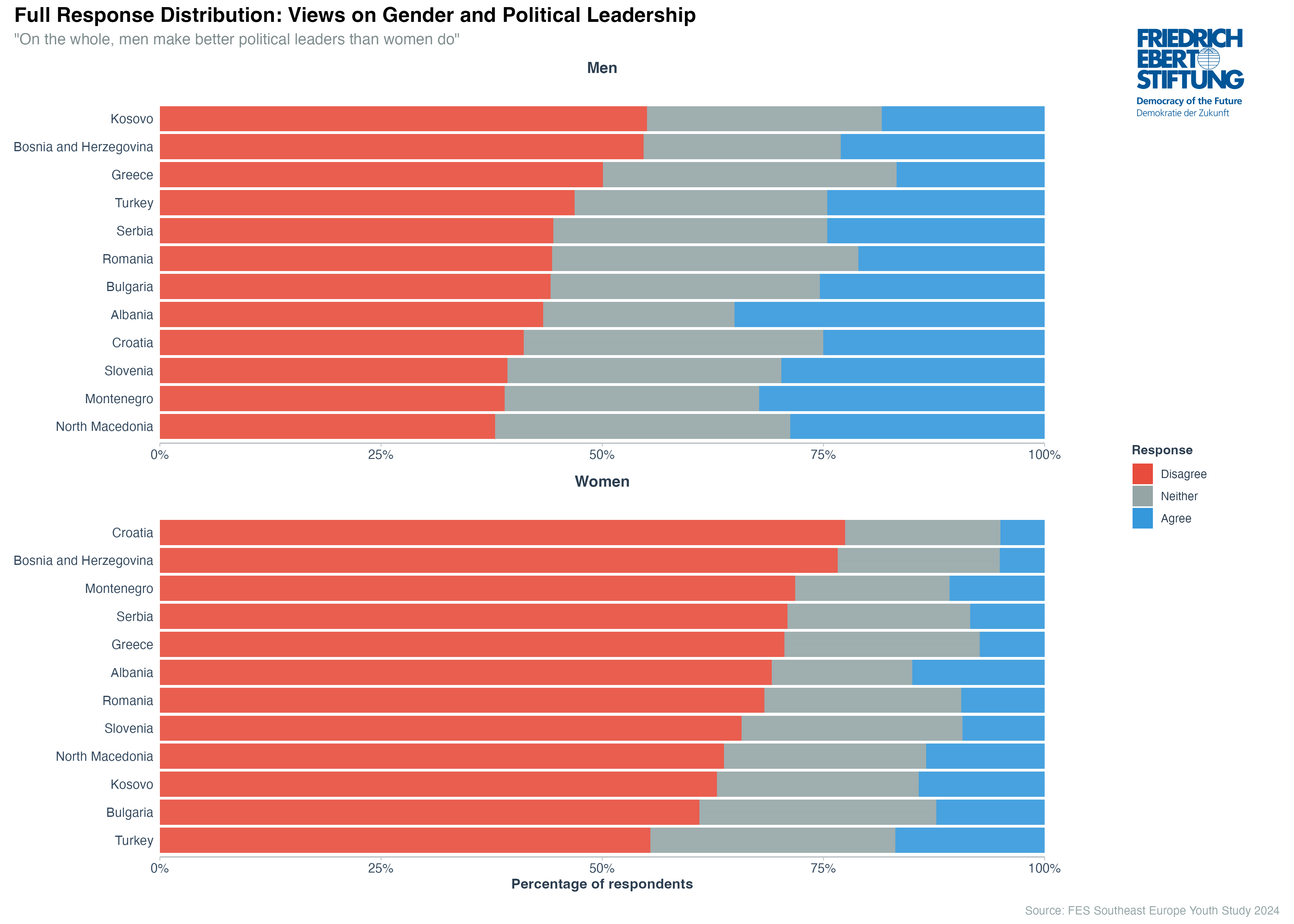
The detailed response patterns show that outright disagreement with male political leadership superiority is the dominant position among young women across all countries, typically ranging from 60-80% who disagree. Young men show more varied patterns—while pluralities disagree in most countries, substantial minorities express agreement, particularly in Montenegro, Slovenia, and Albania where over 30% of young men agree that men make better political leaders.
The "neither agree nor disagree" category reveals important nuances, often capturing 20-35% of responses. This substantial middle ground suggests many young people perhaps hold evolving views on gender and leadership, rather than firm positions either way. Countries with larger neutral categories may be experiencing more active social transitions on gender issues.
Political Engagement Amplifies Gender Differences
Contrary to expectations that political engagement promotes egalitarian attitudes, the data reveals that gender gaps actually widen as political interest increases. Among youth who are "very interested" in politics, 30.9% of men agree that men make better leaders compared to 14.3% of women—a 16.6 percentage point gap. Among those "not interested at all" in politics, the gap is smaller at 10.5 percentage points (22.3% vs 11.8%).
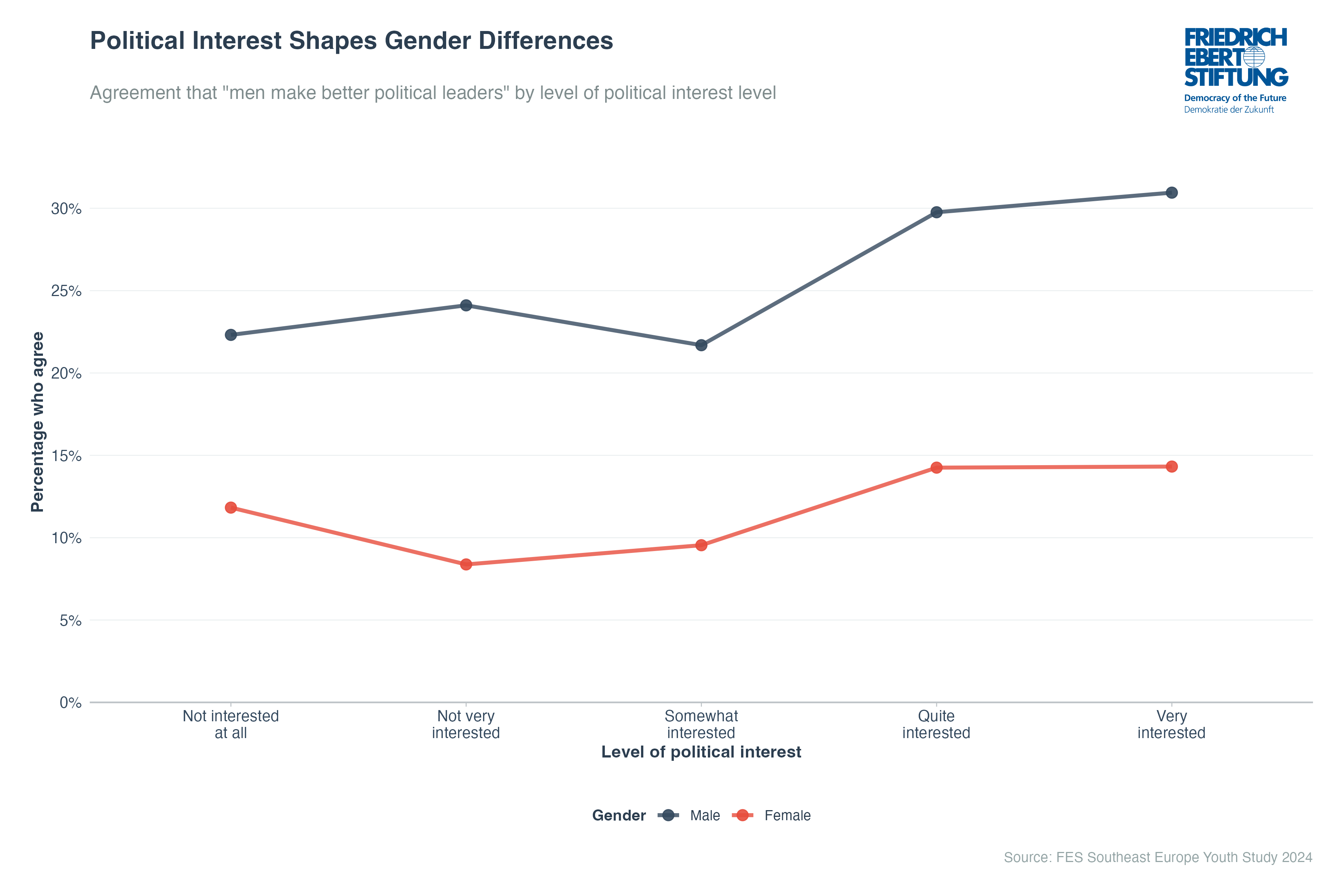
This pattern suggests that political engagement itself may be gendered, with politically interested young men more likely to embrace traditional views of male political authority. Rather than political knowledge leading to more egalitarian views, increased political engagement appears to correlate with stronger gender-role attitudes among men. For women, political interest shows less dramatic change in leadership attitudes, maintaining relatively low levels of agreement with male superiority across all engagement levels.
This finding has important implications for democratic participation. If political engagement reinforces rather than challenges traditional gender hierarchies, efforts to increase youth political participation should be careful not to inadvertently strengthen rather than weaken barriers to women's political advancement.
Ideology Creates the Deepest Divides
Political ideology emerges as the strongest amplifier of gender differences in leadership attitudes. Among right-wing youth, 34.4% of men agree that men make better political leaders compared to 21.9% of women—a 12.5 percentage point gap. But the pattern is consistent across the political spectrum: left-wing men (22.9%) are nearly three times more likely than left-wing women (8.1%) to agree, creating a 14.8 percentage point gap.
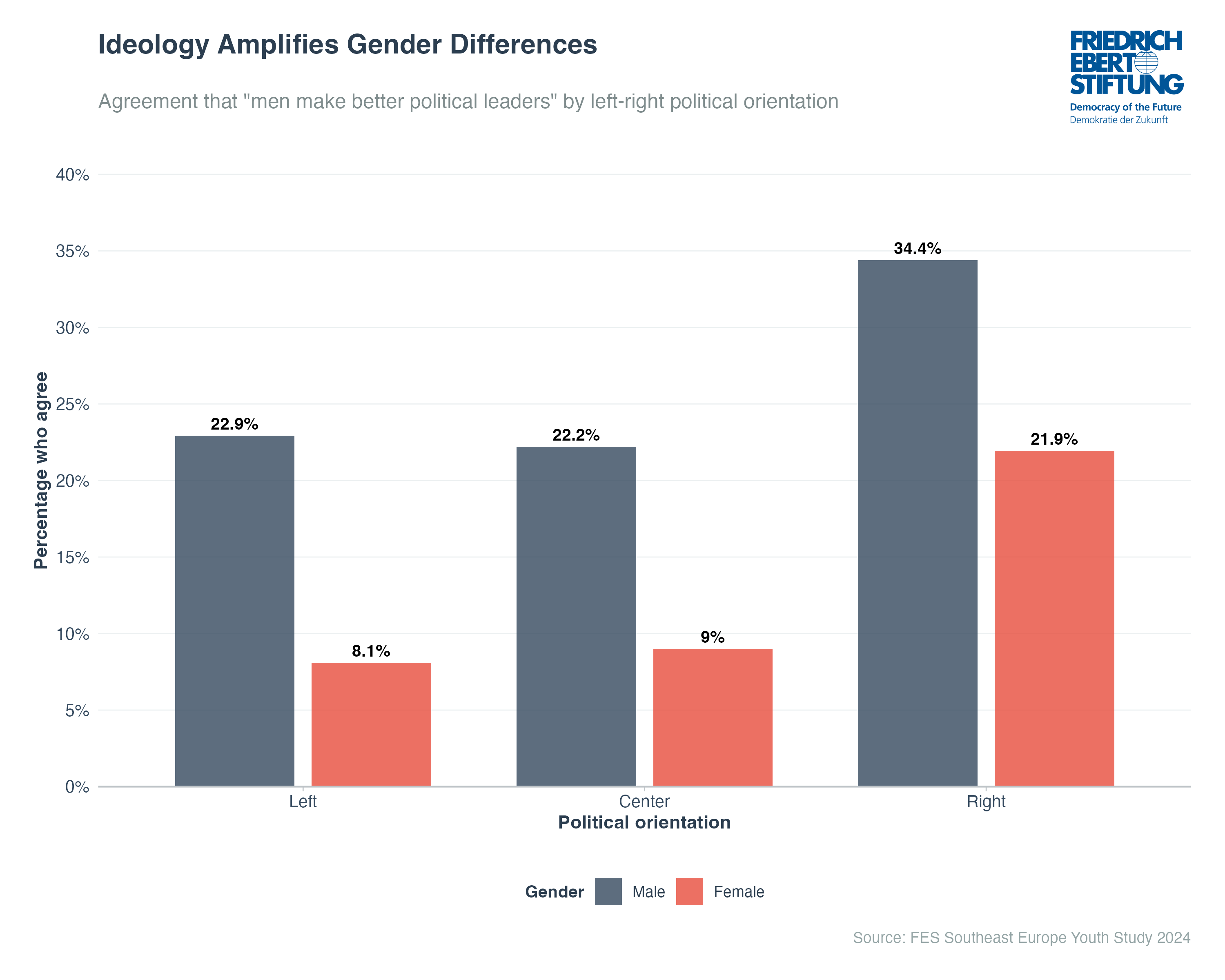
Surprisingly, the gender gap is actually largest among left-wing youth (14.8pp) and centrists (13.2pp) compared to right-wing youth (12.5pp). This suggests that while right-wing youth of both genders are more likely to embrace traditional gender roles, left-wing identification doesn't eliminate gendered thinking about political leadership—it simply shifts the baseline lower while maintaining substantial differences between men and women.
The persistence of gender gaps across ideological lines indicates that attitudes toward female political leadership may be more deeply embedded than other political attitudes. Even among youth who identify with progressive ideology, gendered assumptions about political authority remain prevalent among young men.
Country-Ideology Interactions Reveal Complex Patterns
The intersection of country context and political ideology creates a complex landscape of gender gaps that defies simple regional categorization. The heatmap reveals that ideological effects vary dramatically across countries, with some showing consistent patterns across the left-right spectrum while others display sharp ideological divides.
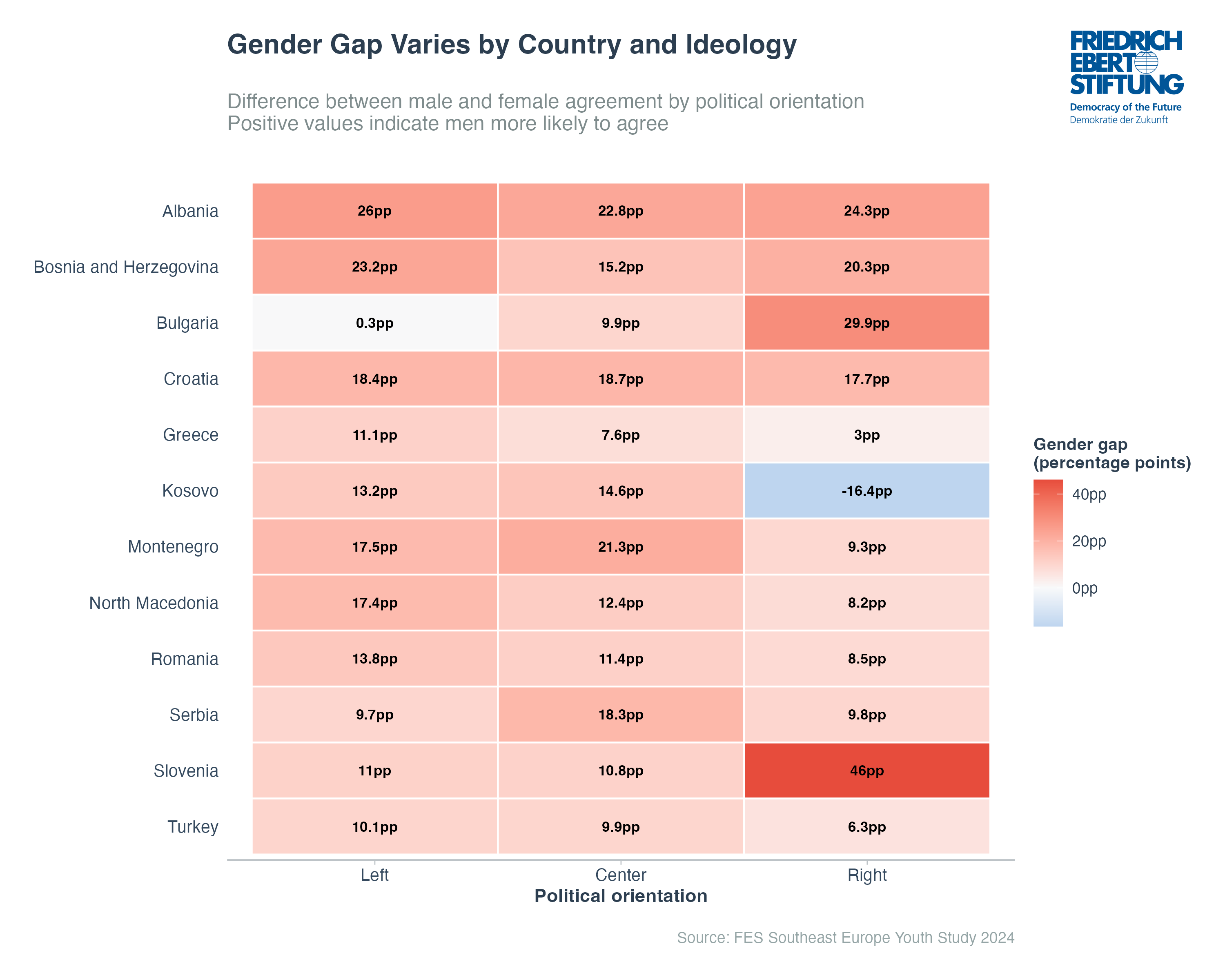
Slovenia stands out with an extreme 46 percentage point gender gap among right-wing youth, the highest in the dataset. This suggests particularly polarized views on gender and political authority among Slovenian conservatives. Albania shows large gender gaps across all ideological categories (24-26pp), indicating that traditional gender attitudes transcend political identification there.
Kosovo presents a unique pattern with a negative gender gap among right-wing youth (-16.4pp), meaning young women are actually more likely than young men to agree that men make better political leaders.
Implications for Democratic Development and Women's Political Participation
These patterns of gender gaps in political leadership attitudes have profound implications for the future of democratic representation in Southeast Europe. With young men significantly more likely to question women's political capabilities, and these attitudes amplified rather than diminished by political engagement, the region faces persistent challenges in achieving genuine gender equality in political life.
The Political Engagement Paradox: The finding that political engagement widens rather than narrows gender gaps suggests that current forms of political socialization may be reinforcing rather than challenging traditional gender hierarchies. This has important implications for civic education and youth political programs, which may need to explicitly address gender attitudes rather than assuming that increased political participation will naturally lead to more egalitarian views.
Ideological Persistence: The consistency of gender gaps across ideological lines indicates that attitudes toward female political leadership operate somewhat independently from other political beliefs. This suggests that progress on women's political representation may require targeted interventions that address gender-specific attitudes rather than relying solely on broader ideological or political change.
Looking Forward: The Future of Gender and Political Leadership
As Southeast Europe continues its democratic consolidation and European integration processes, these gender gaps in political leadership attitudes represent both a challenge and an opportunity. The substantial minority of young men who question women's political capabilities suggests that traditional gender hierarchies remain resilient even among the post-transition generation. However, the variation across countries and the complex interactions with political engagement and ideology also suggest that these attitudes are not fixed.
For policymakers, civil society organizations, and political parties in the region, these findings highlight the need for targeted approaches that address gender attitudes directly rather than assuming that general democratic development or increased political participation will automatically promote gender equality in political representation. The future of women's political leadership in Southeast Europe may depend on how effectively societies can challenge these persistent gender gaps among their rising political generation.
About the Data
This analysis draws from the Friedrich Ebert Foundation's Southeast Europe Youth Study 2024, examining attitudes among young people aged 14-29 based on a survey of 8,943 respondents across Albania, Bosnia and Herzegovina, Bulgaria, Croatia, Kosovo, North Macedonia, Montenegro, Romania, Serbia, Slovenia, Greece, and Turkey.
Related Publications
Hasanović, Jasmin ; Lavrič, Miran ; Adilović, Emina ; Stanojević, Dragan
Youth study Southeast Europe 2024
independent but concerned: the voices of young people in Southeast Europe

